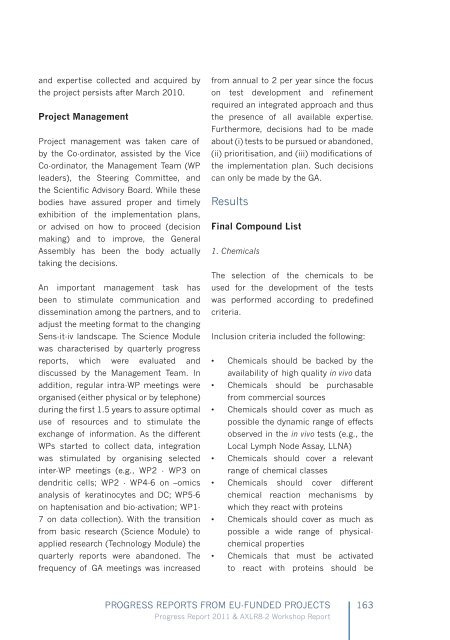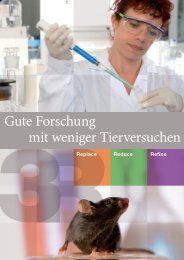You also want an ePaper? Increase the reach of your titles
YUMPU automatically turns print PDFs into web optimized ePapers that Google loves.
and expertise collected and acquired by<br />
the project persists after March 2010.<br />
Project Management<br />
Project management was taken care of<br />
by the Co-ordinator, assisted by the Vice<br />
Co-ordinator, the Management Team (WP<br />
leaders), the Steering Committee, and<br />
the Scientific Advisory Board. While these<br />
bodies have assured proper and timely<br />
exhibition of the implementation plans,<br />
or advised on how to proceed (decision<br />
making) and to improve, the General<br />
Assembly has been the body actually<br />
taking the decisions.<br />
An important management task has<br />
been to stimulate communication and<br />
dissemination among the partners, and to<br />
adjust the meeting format to the changing<br />
Sens-it-iv landscape. The Science Module<br />
was characterised by quarterly progress<br />
reports, which were evaluated and<br />
discussed by the Management Team. In<br />
addition, regular intra-WP meetings were<br />
organised (either physical or by telephone)<br />
during the first 1.5 years to assure optimal<br />
use of resources and to stimulate the<br />
exchange of information. As the different<br />
WPs started to collect data, integration<br />
was stimulated by organising selected<br />
inter-WP meetings (e.g., WP2 - WP3 on<br />
dendritic cells; WP2 - WP4-6 on –omics<br />
analysis of keratinocytes and DC; WP5-6<br />
on haptenisation and bio-activation; WP1-<br />
7 on data collection). With the transition<br />
from basic research (Science Module) to<br />
applied research (Technology Module) the<br />
quarterly reports were abandoned. The<br />
frequency of GA meetings was increased<br />
from annual to 2 per year since the focus<br />
on test development and refinement<br />
required an integrated approach and thus<br />
the presence of all available expertise.<br />
Furthermore, decisions had to be made<br />
about (i) tests to be pursued or abandoned,<br />
(ii) prioritisation, and (iii) modifications of<br />
the implementation plan. Such decisions<br />
can only be made by the GA.<br />
Results<br />
Final Compound List<br />
1. Chemicals<br />
The selection of the chemicals to be<br />
used for the development of the tests<br />
was performed according to predefined<br />
criteria.<br />
Inclusion criteria included the following:<br />
• Chemicals should be backed by the<br />
availability of high quality in vivo data<br />
• Chemicals should be purchasable<br />
from commercial sources<br />
• Chemicals should cover as much as<br />
possible the dynamic range of effects<br />
observed in the in vivo tests (e.g., the<br />
Local Lymph Node Assay, LLNA)<br />
• Chemicals should cover a relevant<br />
range of chemical classes<br />
• Chemicals should cover different<br />
chemical reaction mechanisms by<br />
which they react with proteins<br />
• Chemicals should cover as much as<br />
possible a wide range of physicalchemical<br />
properties<br />
• Chemicals that must be activated<br />
to react with proteins should be<br />
PROGRESS REPORTS FROM EU-FUNDED PROJECTS<br />
Progress Report 2011 & AXLR8-2 Workshop Report<br />
163




